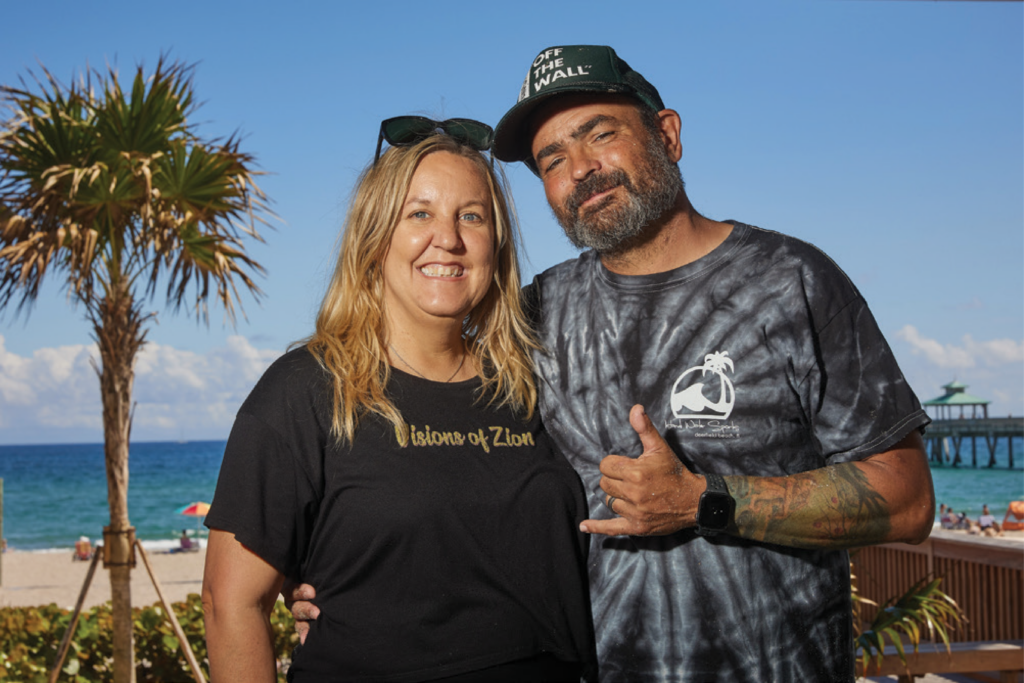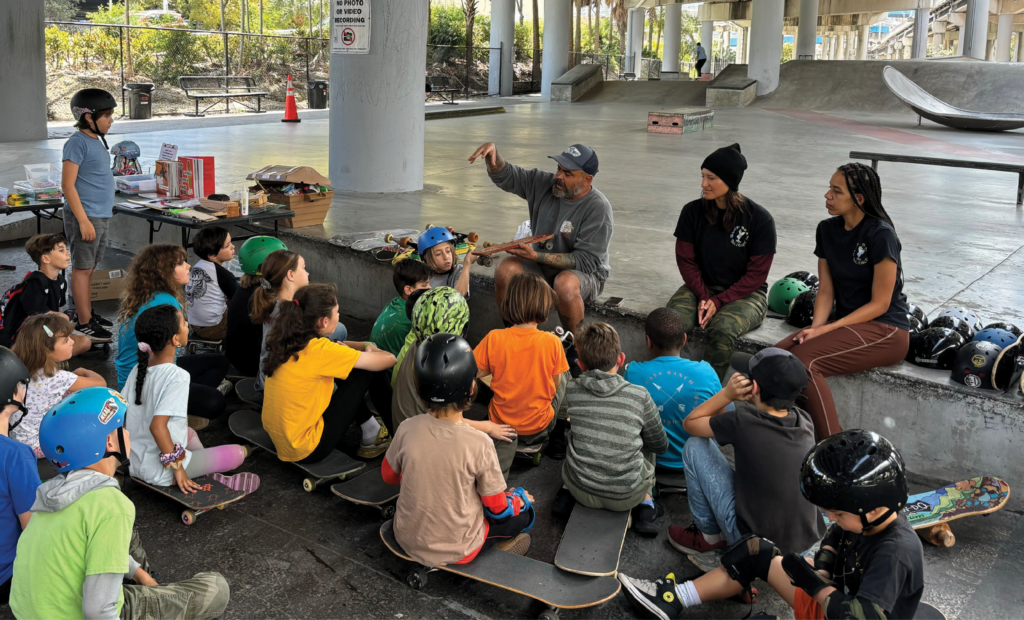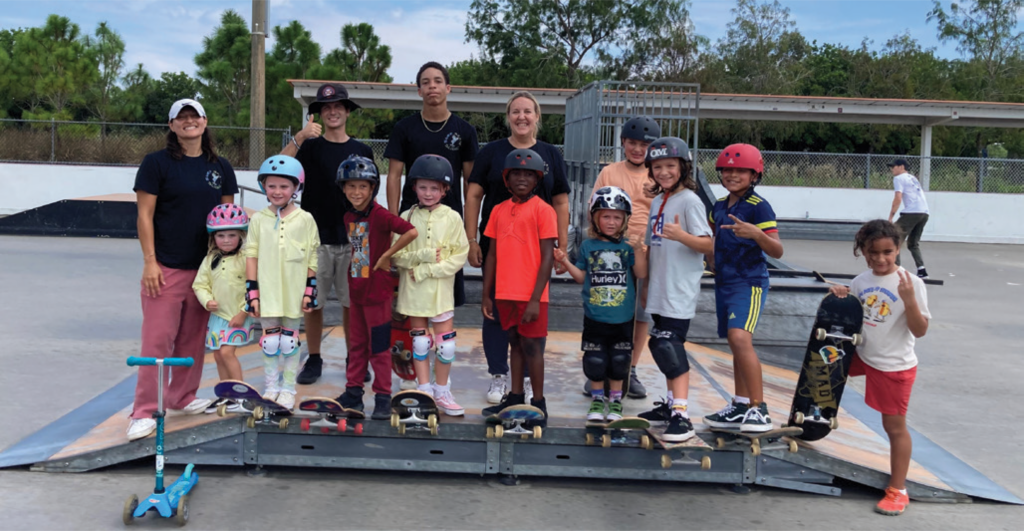
Editor’s note: This story is one of five spotlights included in our latest special report, “A Taste of À La Carte Learning.”
In 1977, a 15-year-old skateboarder in South Florida named Alan Gelfand invented a revolutionary move called “the ollie.” The ollie has been called the “cornerstone of modern skateboarding” because future skateboarders would use it as the building block
for so many gravity-defying tricks.
In a similar vein six years ago, Toni and Uli Frallicciardi—who, as fate would have it, live in South Florida and know Gelfand—invented their own distinctive move in the education space.
Their outfit, Surf Skate Science, isn’t a school. It focuses on a single subject area. But it does so in a way that allows its classes to be
a building block.
The classes can stand alone or be plugged into South Florida’s network of micro-schools. They can also be mixed and matched with other providers into whatever combination a family may want.
Truth be told, that’s not what the Frallicciardis intended in the beginning.
“We had no idea how this would grow,” Toni Frallicciardi said. “We were just trying to figure out what would work for our kids.”
The Frallicciardis aren’t alone in their creativity or in their ability to seize on serendipity.
What’s rising in South Florida evokes “The Geography of Genius.” In a few short years, scores of educators have created a completely self-sufficient alternative ecosystem, with à la carte providers like Surf Skate Science an increasingly important component. Micro-school founder Shiren Rattigan, whose Colossal Academy works with a dozen of them, said, “We’re the soup. They’re the spice.”
There’s no end to the à la carte options entrepreneurial educators can create, which means there’s no end to the combinations that parents will be able to create for their kids.

Kassandra Rodriguez has two sons—Zachary, 11, and Cameron, 8—who benefit from Florida’s ESA for students with special needs. She uses the ESAs to pay for speech therapy, dyslexia tutoring, piano lessons, writing lessons via Outschool, enrichment courses at a hybrid home school, and more.
She also uses the ESAs for Surf Skate Science.
At one point, Zachary and Cameron built skateboards by hand, cutting the wood and sanding it themselves. They took a field trip to an Apple store to work on decorative graphics.
“They get to touch and feel and give their input on whatever they’re working on. It’s hand-on learning,” Rodriguez said of Surf Skate Science. Without the ESA, “We wouldn’t be able to do this.”
In 2018, the Frallicciardis were new home-school parents, just looking for ways to teach their kids science. Both have backgrounds in the subject—Toni, with a degree in ocean engineering, and Uli, with decades of experience designing skate parks.
They decided to teach weekly classes at the beach and the skatepark, where they could tie surfing and skating to physics, engineering, marine biology, and other scientific disciplines. They wanted the lessons to be rich in content and fun.
“We thought, ‘If I was a student, what would I like to do?’ “ Toni Frallicciardi said. “And, ‘What could you learn if you weren’t in a normal school? If you weren’t stuck in a normal classroom?’ “
The typical Surf Skate Science lesson involves 45 minutes of instruction and 45 minutes of surfing or skating. The lesson covers key facts and concepts and includes a hands-on portion, such as mixing concrete and making mini skate ramps out of molds.
The Frallicciardis weave in math, writing, art, design, and homework.
For one assignment, students had to find out who to contact in local government to get a skate park built. For another, they examined Census data to determine how many young people were within a certain geographic area and how many skate parks might be needed to accommodate them.
The students frequently meet with experts, from skate park architects to scientists from local universities and organizations like the Broward County Sea Turtle Conservation Program. Some of them recently joined marine biologists from the University of Miami for shark tagging.
“You’re doing real life,” Toni Frallicciardi said.
The alternative education boom in South Florida got a boost from two unfortunate events: The mass shooting at Marjorie Stoneman Douglas High School in 2018 and the COVID-19 pandemic in 2020. Both left more families dissatisfied with traditional schools and hungry for alternatives.
In 2018, Surf Skate Science had five students. Today, it has 500, with another 110 on a waitlist. The outfit also organizes science-related field trips that reach another 2,000 students a year.
This à la carte thing is catching some serious air.



